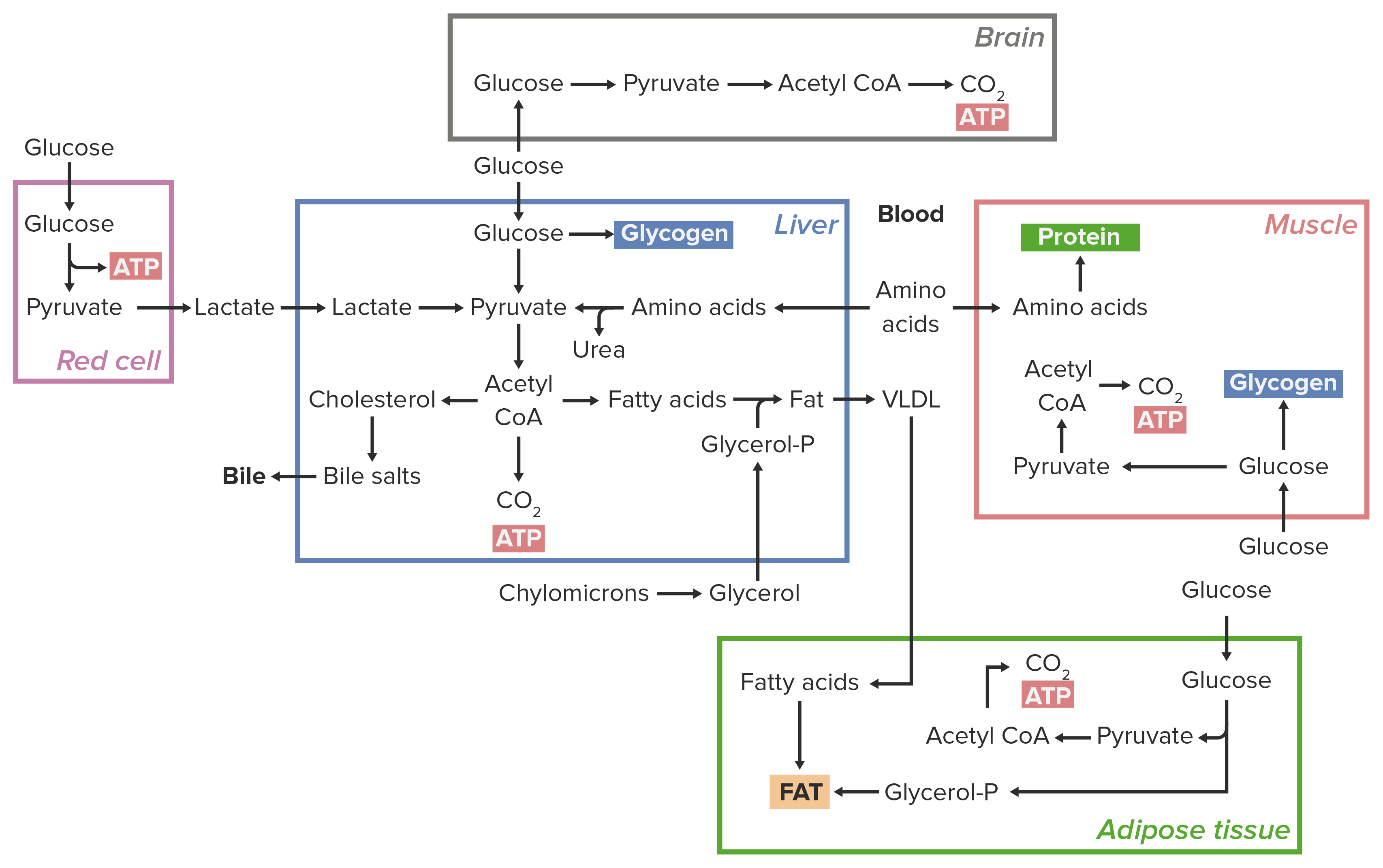Playlist
Show Playlist
Hide Playlist
Activation and Inhibition
-
Slides 14 EnergyEnzymesMetabolism CellBiology.pdf
-
Download Lecture Overview
00:01 So enzymes being the key players in this game of metabolism can be activated or inhibited. 00:09 When we consider them being inhibited, they can either be competitively inhibited or allosterically inhibited. 00:17 Now you might understand competition but what on earth is allosteric. 00:22 Competitive inhibition, we'll take a look at first, involves our enzyme and recall that each enzyme has an active site. 00:30 And generally the substrate would bind into the active site. However, on occasion, something else gets there first, this would be an inhibitor molecule or a competitive inhibitor because it is competitively binding to the site. 00:46 We have a lot of drugs and productions these days that are competitive inhibitors. 00:52 For example SSRIs, selective serotonin reuptake inhibitors actually binds to receptors that should be reuptaking serotonin and prevent the binding of serotonin itself so it cannot be reuptake and it spends more time in the synaptic cleft and makes us happier. 01:12 It's in a lot of antidepressents drugs. 01:15 Anyway, moving forward from there to the allosteric thing. What on earth is an allosteric site? Well, it's pretty simple. Anything other than the active site that's a binding site on an enzyme. 01:27 So anything other than the site that takes a substrate is called an allosteric site. 01:33 So allosteric sites could bind another molecule. We'll either see allosteric activation or allosteric inhibition. 01:43 In this example, we'll look at inhibition. We have an allosteric inhibitor binds to the allosteric site changes a normal shape active site, an active active site, into an inactive active site and so the substrate that should fit into the example of the middle no longer can fit and so the enzyme activity has been inhibited or shut down. 02:10 The opposite can happen with allosteric activation. We have an enzyme. It has an active site that is in not the ultimate form, and let's say we want to turn it on. 02:20 We can now have an allosteric activator binds somewhere else on the enzyme, to the allosteric site, mystery there, and it changes the shape of the receptor site, the active site, so that the substrate can bind into that active site and the enzyme can go ahead and do the job that it's supposed to do. 02:40 So allosteric inhibition and activation, both involve a site somewhere else on the enzyme that changes the confirmational shape of the active site.
About the Lecture
The lecture Activation and Inhibition by Georgina Cornwall, PhD is from the course Energy, Enzymes and Metabolism.
Included Quiz Questions
Which of the following statements regarding activation or inhibition is correct?
- Allosteric inhibitors bind to sites other than the active site, making the enzymatic reaction less favorable.
- Competitive inhibitors bind to the active site of an enzyme to make the enzymatic reaction more favorable.
- Allosteric activators bind to the active site of an enzyme to make the enzymatic reaction more favorable.
- Allosteric inhibitors bind to a site other than the active site to make the enzymatic reaction more favorable.
- Allosteric activators bind to the active site of an enzyme to make the enzymatic reaction less favorable.
Customer reviews
5,0 of 5 stars
| 5 Stars |
|
5 |
| 4 Stars |
|
0 |
| 3 Stars |
|
0 |
| 2 Stars |
|
0 |
| 1 Star |
|
0 |




